The Chilik-Chon Kemin Fault Zone is a major left-lateral strike-slip fault zone in Kazakhstan and Kyrgyzstan, just a few tens of kilometres east of Almaty and north of Lake Issyk Kul. It has seen one of the largest continental earthquakes ever recorded in 1889, with an estimated magnitude of ~M8.3. In July and August I had the chance to visit this fault zone for two weeks together with Angela Landgraf from Potsdam and Aidyn Mukambaev from the National Data Centre, thanks to a travel grant from COMET (thanks so much, COMET!) and with support from the EwF Project. We wanted to find out more details about the tectonic geomorphology of this fault zone and we wanted to study the slip rate and earthquake recurrence intervals. So we took our drone, shovels and picks and set off for a field trip into the mountainous wilderness. Since I will leave for another field trip to Kazakhstan (Dzhungarian Fault) tomorrow, I will leave you with some impressions from our field work and provide more information once the paper is published…
Enjoy!
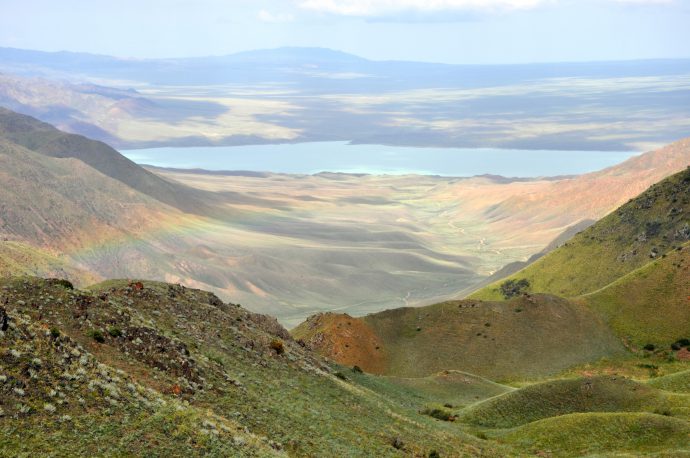
A rainbow across the fault, but where is the gold?
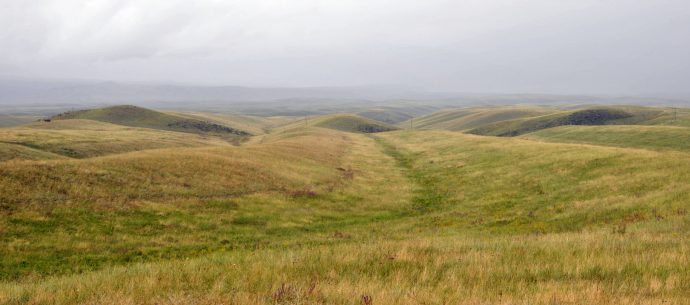
Offset linear ridges.
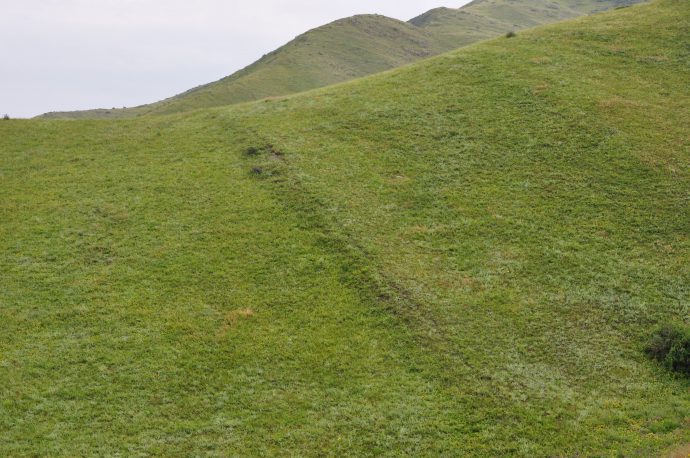
The 1889 rupture.
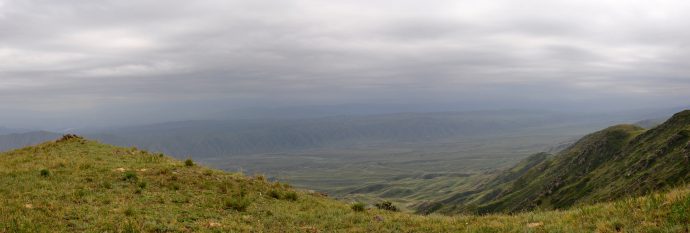
Geomorphologists’s Disneyland.

Steep terrain, but beautiful fault.
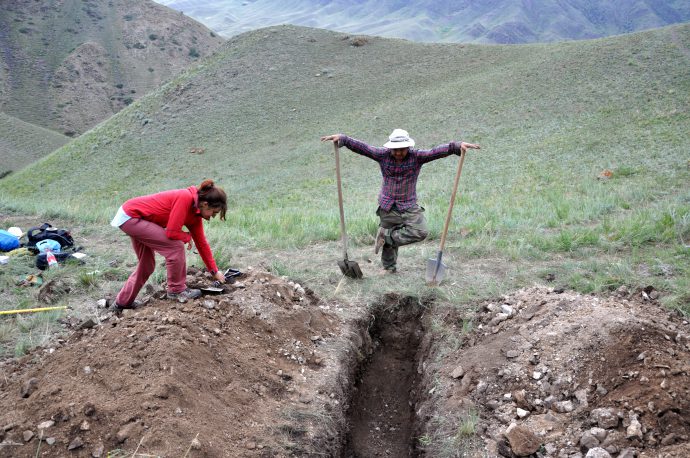
Lesson learned: Always trench next to a road, otherwise you don’t have an excavator and you need to carry the picks and shovels to the trench site (and back).

The fault also has a vertical component of motion as evidenced by the uplifted erosional surface.
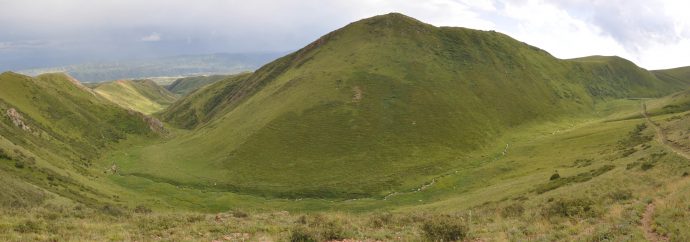
This is the scale of offsets that we observed. A channel diverted by 350 m!
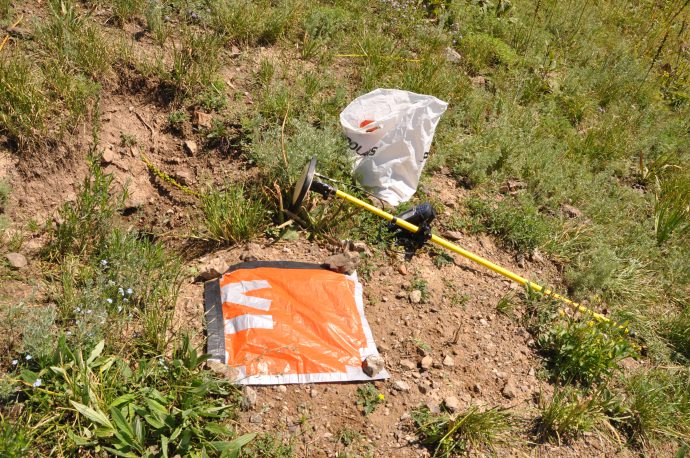
Ground control points for our drone survey.
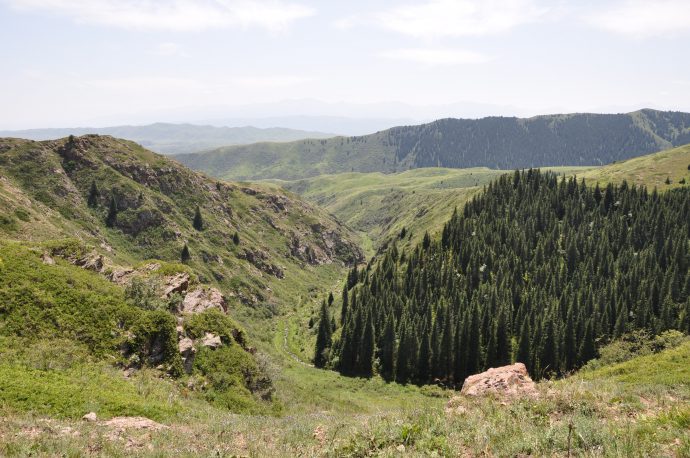
Another offset river.

Gela in field gear – we had lots of rain and thunderstorms. No fun if you know that the only way out of the valley is a three hours drive on muddy roads…

Sarytay Valley
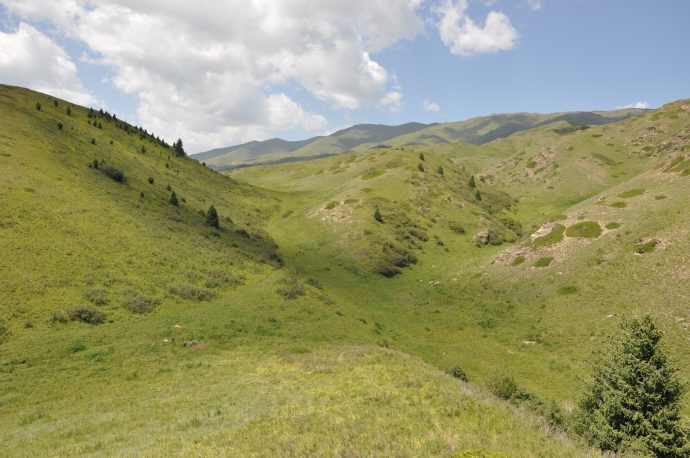
A windgap, an amazing and beautiful windgap. Probably recored only a few events or even only one really big one. We’ve dug a 2.5 m deep it here.
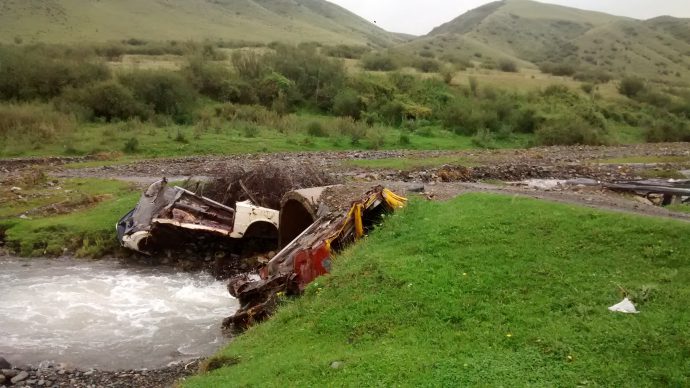
An innovative way of building bridges.
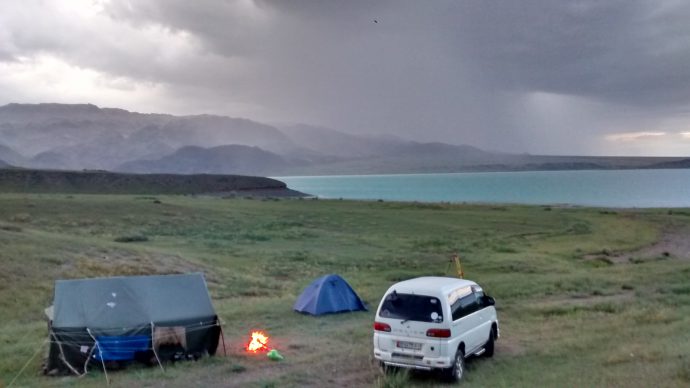
A thunderstorm approaching our camp.
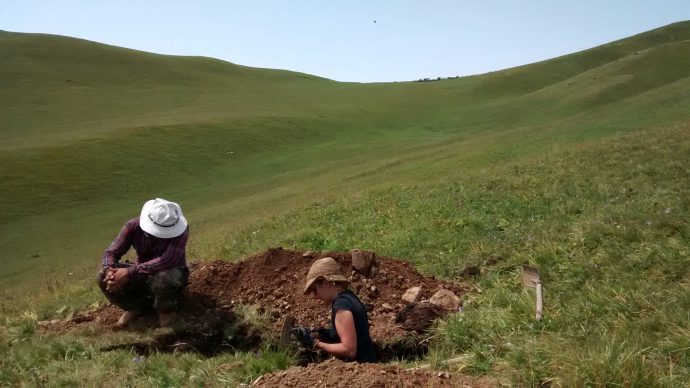
How old is this scarp? Let’s dig a pit and find out.
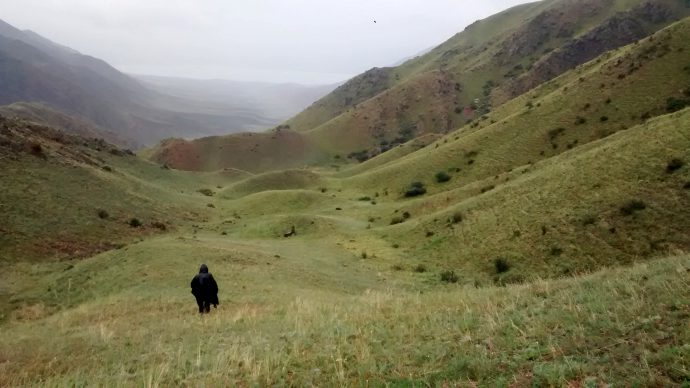
The fault has nicely offset those ridges.
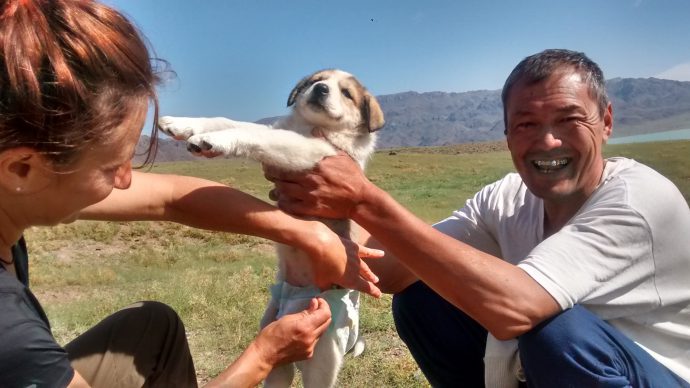
Our drive back to Almaty became much more interesting than I thought it would be when our driver bought a puppy the day before we left.
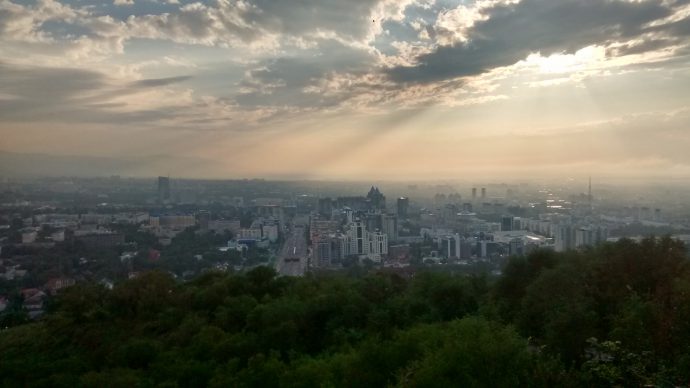
Back in Almaty, finally.
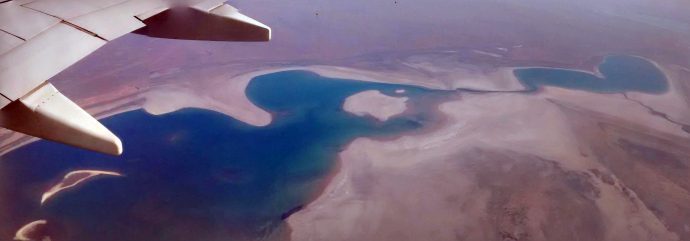
On the flight back I’ve seen what is left from the Aral Sea.
Literature:
- Abdrakhmatov, K., Walker, R. T., Campbell, G. E., Carr, A. S., Elliott, A., Hillemann, C., Hollingsworth, J., Landgraf, A., Mackenzie, D., Mukambayev, A., Rizza, M., and Sloan, R. A., 2016. Multi-segment rupture in the July 11th 1889 Chilik earthquake (Mw 8.0-8.3), Kazakh Tien Shan, interpreted from remote-sensing, field survey, and palaeoseismic trenching; JGR-solid earth, 121, doi: 10.1002/2015JB012763.
- Landgraf, A., Dzhumabaeva, A., Abdrakhmatov, K., Strecker, M.R., Macaulay, E.A., Arrowsmith, JR., Sudhaus, H., Preusser, F., Rugel, G., and Merchel, S., 2016. Repeated large-magnitude earthquakes in a tectonically active, low-strain continental interior: the northern Tien Shan, Kyrgyzstan, JGR-solid earth, 121, doi:10.1002/2015JB012714.
- Krüger, F., Kulikova, G., and Landgraf, A., 2015. Instrumental magnitude constraints for the July 11, 1889, Chilik earthquake. In Landgraf, A., Kübler, S., Hintersberger, E., and Stein, S. (eds.), Seismicity, Fault Rupture and Earthquake Hazards in Slowly Deforming Regions, Geological Society of London, Special Publications (432), http://doi.org/10.1144/SP432.8.
- Mushketov, I. V. 1891. Materials for investigation of earthquakes in Russia. Annex to the 27th volume of tidings of the Imperial Russian Geographical Society (in Russian).



https://pilpres2024wrd.wordpress.com/ | 2025-12-06|13:32 (UTC)
The enthusiasm shown by voters during the presidential election is inspiring, and hopefully everyone maintains good intentions. Click the link for more details.
https://pilpres2024wrd.wordpress.com/
https://pilpres2024wrd.wordpress.com/ | 2025-12-08|14:21 (UTC)
Thank you for creating such a helpful and informative article. I appreciate the effort you put into making the concepts accessible and easy to apply in real-life situations.
https://pilpres2024wrd.wordpress.com/
https://dcarssolutions.com/ | 2025-12-12|10:15 (UTC)
Thank you for creating content that feels both insightful and easy to follow. I appreciate how readers can understand the topic without any confusion.
https://dcarssolutions.com/